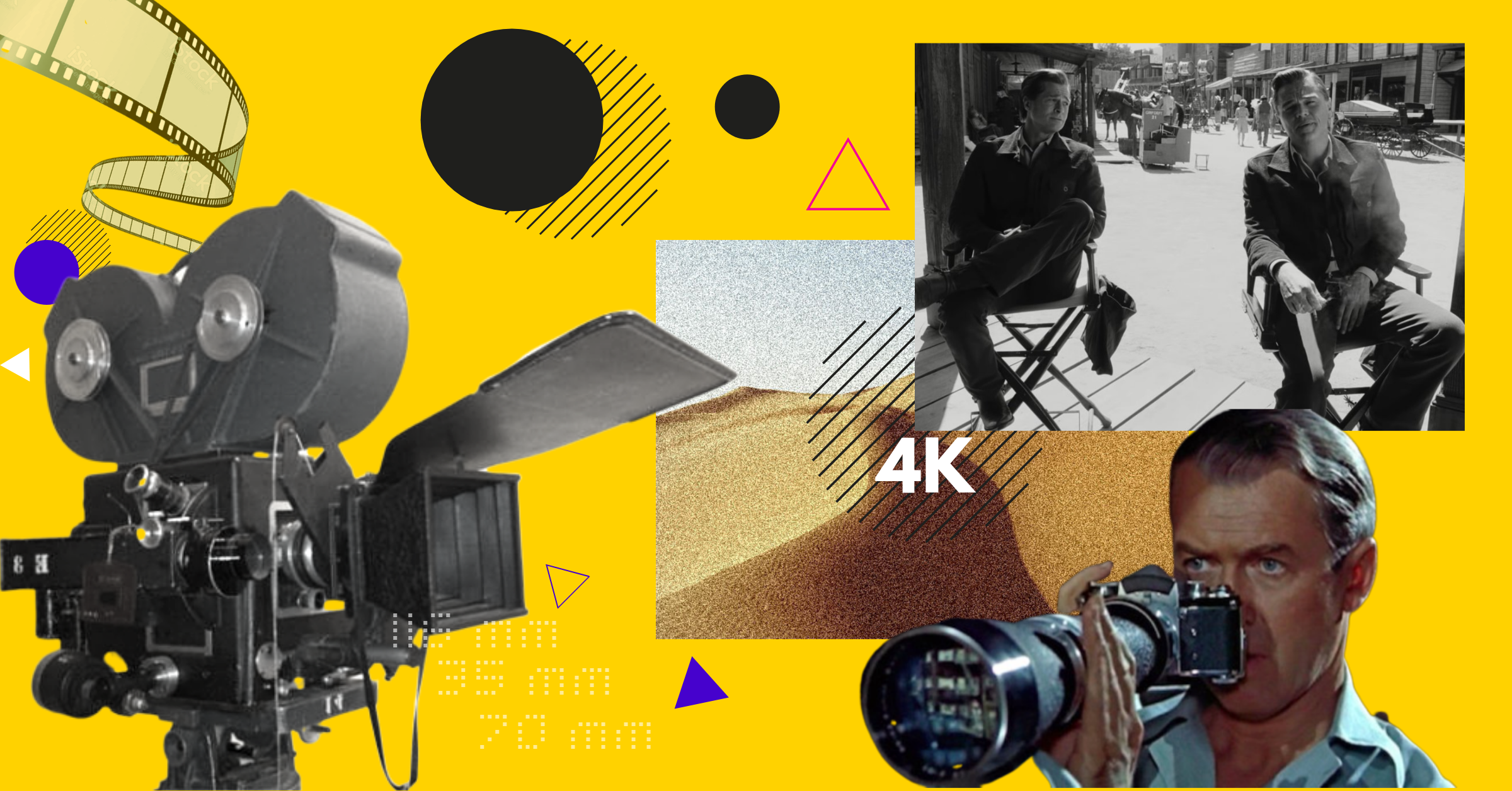The Author's Introduction:
Before digging into the movie-analog-celluloid-film-digital world I used to think just as all non-professional average movie watchers that quality of old movies truly sucks comparing to the nowadays technologies.
Well, "old is gold...but not about quality".
And every time I heard that movies shot in 50-80-ies are to 4k I was immediately thinking about mind-blowing AI technologies: “How blessed we are to live in 2019: humanity improves an old art, tries getting to Mars to start a colony and creates autopilot cars! Wow!”.
Actually - yes.
But not about movies: the answer will surprise you.
Film remastering is not really improving just because the resolution of movies shot on film… is much LARGER than all movies shot on digital sensor cameras nowadays!
The world obtained the highest possible 8K definition cameras and projection on the LED cinema screens. It brings you into virtual reality just without goggles.
So why do old movies now are substantially getting remastered? Is this just a simple nostalgy like vinyl rediscovering for music lovers? Or the nature of celluloid film restoring is based somewhere else?
Hope this article will help you.

Film renessainse
Using film can be caused by nostalgy. Or used to give movies some retro vibes.
Examples?
The quirkiest film director Wes Anderson uses film to give his movies a certain period look. The Moonrise Kingdom was shot on 16mm film stock to make the whole movie look like it was made in 1965. And his The Grand Budapest was shot on 35mm according to the iconic standards.
That’s not a secret that cinema gurus like Tarantino or Nolan are shooting entirely on the film. For them, it’s the only possible way of making cinema art. While 98% of movies are shot on the digital cameras they are staying die-hard celluloid purists now working in Hollywood.
“If I can’t shoot on film, I’ll stop making movies,” - Tarantino says.
He is considering the digital projection as a television in cinema. What literally means the death of it.
Tarantino was shooting all his movies on the 35mm analog film, while his last published western The Hateful Eight was filmed entirely on 70 mm to avoid digital processes throughout much of his post-production.

Nolan being in the same boat, doesn’t waste any opportunity to emphasize the film superiority over digital in his interviews. He proclaims 70mm as a gold standard for making movies.
Apart from other analog film purists Nolan’s 70mm passion has other roots. He is interested in obtaining the highest possible picture quality rather than cherish the nostalgy of the old cinematograph.
His greatest masterpiece (well, every Nolan’s movie is a jewel) Dark Knight was just partly shot on IMAX cameras with 70mm film. This movie is so insanely detailed that the brain can barely process it though. Dark Night has 28 minutes of IMAX footage and progressing with immense 72 minutes of The Dark Knight Rises IMAX footage.
But his last movie “Dunkirk” is culminating all Nolan’s obsession with the film. It was shot entirely on 70mm film with IMAX cameras.
"Dunkirk is the highest resolution film that's ever been shot. That's irrelevant though. It's about the feeling you get." - said Christopher Nolan
And that’s the absolute truth.
Furthermore - “Dunkirk” marketing campaign was mostly based not exactly on its historical essence but on using rare and high-priced IMAX cameras with 70mm film.
During the film promotion, there was an innumerable amount of striking headings like “Nolan Sank a $500,000 IMAX Camera” or “Nolan intentionally crash planes with IMAX cameras into the sea to avoid adding effects in post-production”.
Afterward, “Dunkirk” (“a tour de force of cinematic craft and technique” by New York Times) was heralded as a pure visual stunner by the biggest cinematographic accolades.
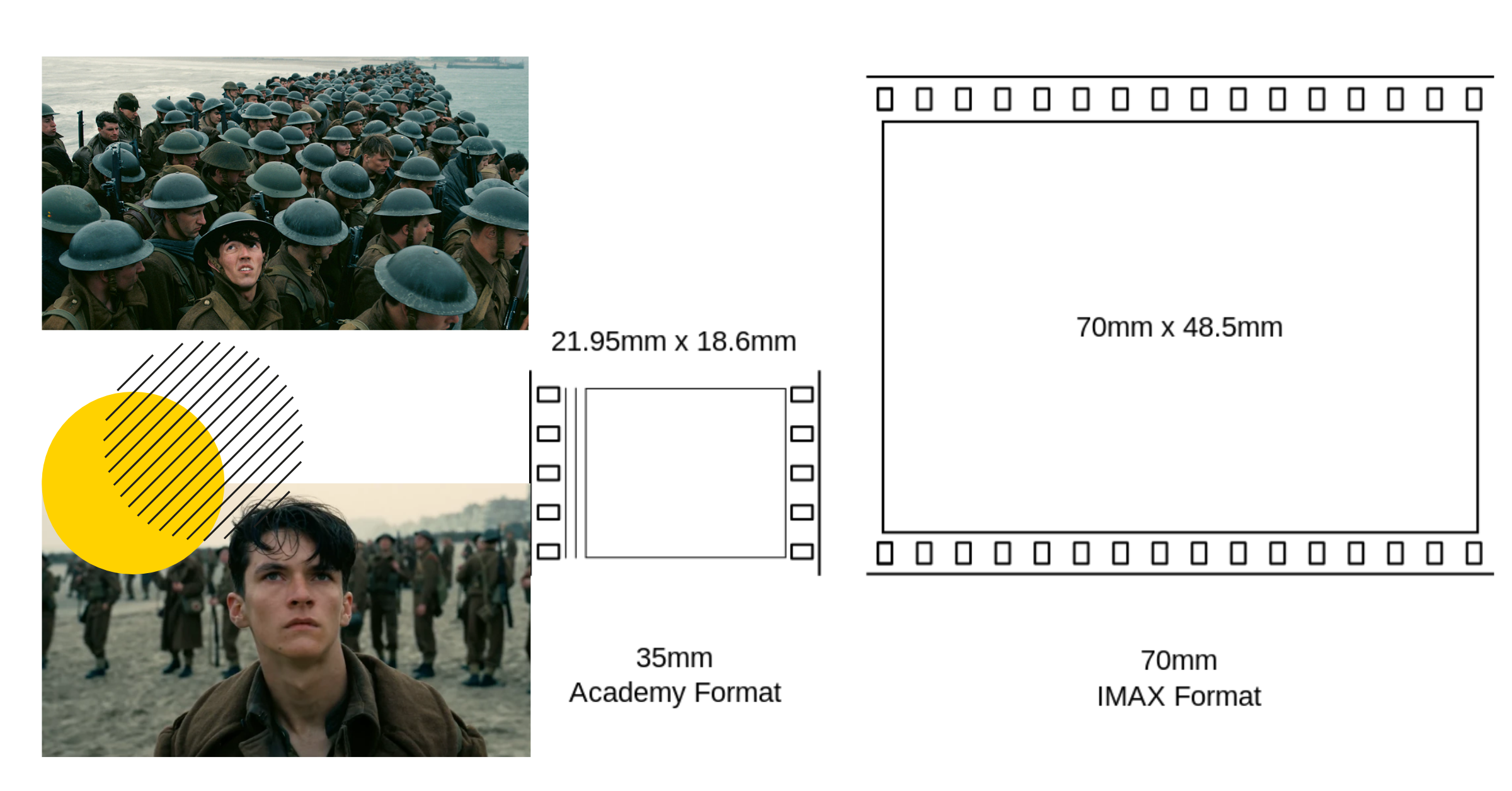
So what exactly is the resolution of film?
The film resolution doesn’t exist.
We can’t measure the analog film in the same way we do with digital ones.
We can't do it until the film would be captured by the scanning device and turned into the digital pixel coordinate system. After that it's open for usage on Blu-Ray disks, by streaming services or broadcast media.
Why?
Because the film hasn’t got a pixel count. There is no systematic combination of red, blue, green dots onto any sort of grid.
Instead of this, the film has grain. Lots of tiny grains.
Every frame has a unique grain pattern. It gives an illusion of images moving within itself on the contrary with a digital version which is very flat.
The analog film has higher resolution than the most digital sensor cameras we have today.
35 mm translates to 4-16 megapixels depending on the film quality. These 16 megapixels (if the movie was shot on a good film) translates into 4920 x 3264 and it’s about 5K in modern digital equivalents.
Yeap, the old movies shot many years ago have approximately 4-5K of modern quality.
Mesmerizing?
So what quality approximately has 70mm?
If we convert 70mm celluloid film into digital it would be... 13K.
We barely can afford 8K quality in 2019!
Well, wait!
But we have 70mm for IMAX cameras and that’s almost unimaginable quality - 18K. And yeap, “Dunkirk” has 18K of quality. And all other visual masterpieces that were shot on 70mm IMAX film as well.
70mm IMAX frame is about 10 times larger in physical size and about three times larger in final resolution than the iconic 35mm frame.
By the way, 35mm is the standard for theatrical presentation widely known as DCP - Digital Cinema Package.
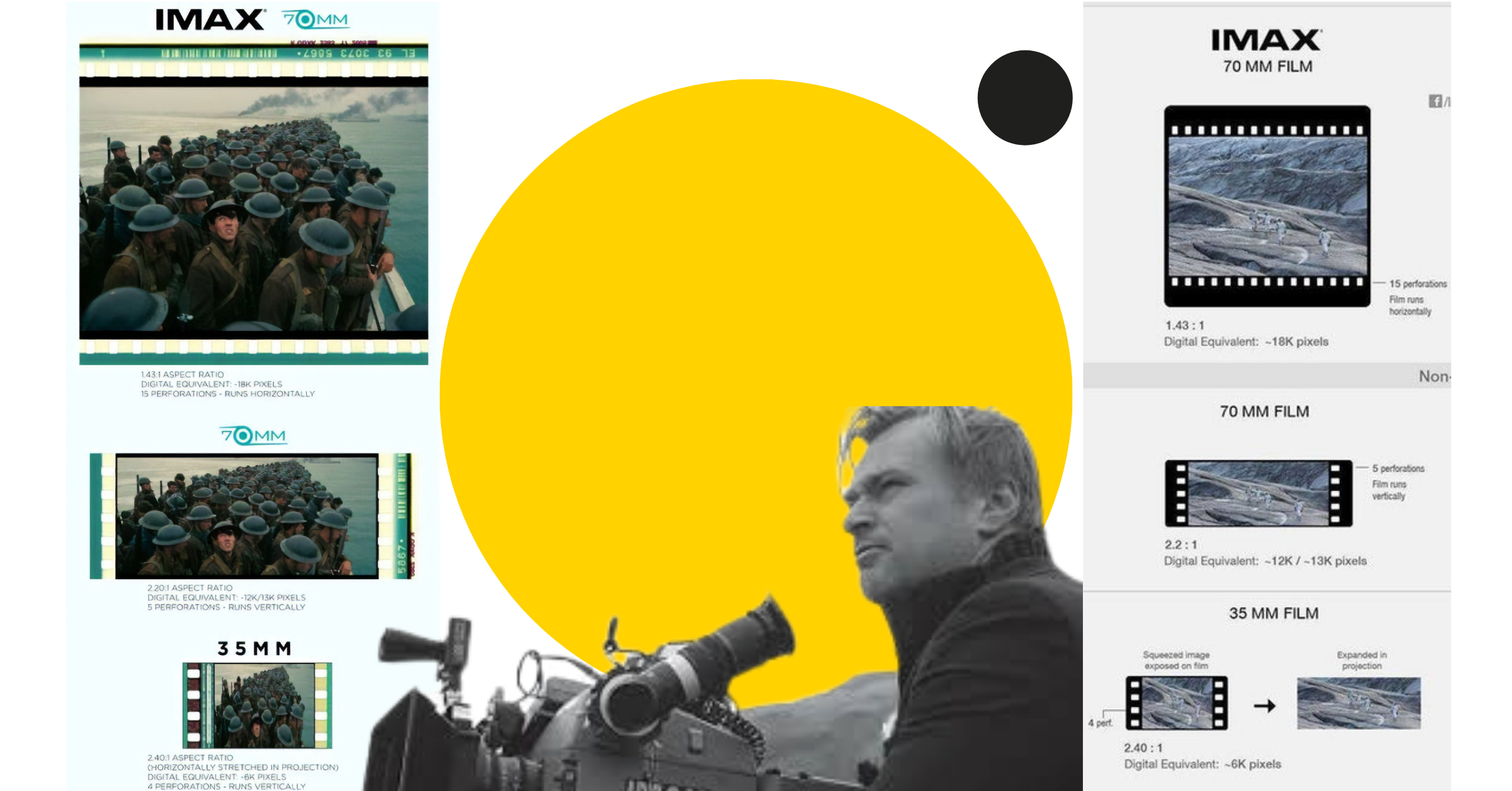
Here is the logical short-cut: if the shooting on film is so much better than on digital, why do people shift into digital cameras?
Here are core aspects that are fixed by shooting on digital:
- The film can’t be widely broadcasted
But the digital one can.
Movie on analog film cannot be shown at one time in London, Chicago, and Toronto. It can’t be transported within 10 minutes to the next cinema. Earlier it required huge transport efforts to move films. So the digital format has an outstanding advantage - it’s easy in distributing data and its processing.
- Equality into reaching an art
Earlier only rich people could afford to watch the movie on its premiere.
Ok well, only wealthy could watch the movie very close to the date it came out. Poor people watched it at some point in the late future.
Why?
Because cheap theatres rented the prints. And these prints were already been run for approximately 5 times per week for 2 months long. And here is the next disadvantage:
- The celluloid film deteriorates
It’s getting worse after several times of exploitation.
However careful the projectionist is in handling a movie, every time the film runs through the projector - it’s being damaged. After that, it had to be rewound for the next showing.
Thuswise little scratches appear on the film surface. As well as the colors got paler because of frequent rubbing and dust.
That’s why the film premiere was a giant thing. When people watched the film for the first time it had a crispy quality with flawless and high-contrasted colors.
- Proper conditions
And another reason which is quite extravagant in the modern world - if you don’t keep a film in a proper way (climate, temperature) - you will lose it.
80% of films have ever been made have gone forever! And if you lose the negative or any kind of prints - the movie is lost forever.
- Expensiveness
Shooting on celluloid is extremely expensive.
Extremely.
It requires specific cameras, transportation costs, and film. Lots of film.
Just think: blooper reel can be easily deleted from digital. But they will be done and shot on film over and over again.
If we are talking only about the materials needed: a shootage of the 90-minute movie on film will cost 250000$. While the same on digital will be...100$.
So nothing surprising that only big fishes like Nolan, Tarantino or Scorcese can afford shooting on celluloid.
And with all these tremendous flaws here we go into the digital cinema world:
- Digital is kept in the tiny space (HDD vs 11k feet of film)
- It easier to be spread
- Doesn’t get destroyed with conditions or break at weak points
- Digital projectors are much cheaper
The irony is that movies shot on film have to be encoded into digital to be shown in the cinemas due to these reasons.
Regardless of the movie's age (is it crispy new prints or the old ones) it is going through the same process called DMR - digital remastering. It starts from a digital encoding of standard 35mm Hollywood film and goes on with remastering into higher-resolution digital format for multiplexes if needed.
And for old movies, the process of encoding has some extra features….
Which ones?
We will tell. But firstly let’s check out the nature of film.

How can plastic strip record the movie?
The chemical component in a traditional camera is a film.
Essentially, when you expose the film to a real image, it makes a chemical record of the pattern of light. The thousands of tiny light-sensitive grains cover the strip of plastic in a chemical suspension. When the light occurs on the film the grains undergo a chemical reaction.
The negatives (where lighter areas appear darker and darker areas appear lighter) are produced when chemicals darken the grains that were exposed to light and vice versa.
That’s how black and white film works.
Another story with colorful films.
They have three layers of light-sensitive materials to respond to red, green and blue. The chemicals react to the light appearing on the film and creating the full-color negative.
Capturing reality on the image requires complete darkness until it’s time to record an image.
Interesting fact: “camera” is shortened from “camera obscura” in Latin that translates as “dark chamber”.
Then when you want to take a picture mechanisms you should move the shutter that opens-closes between the lens and film and lets some light in.
What’s more important - you need to control how much light hits the film for your image being right accurate.
If too much light appears on a film - too many grains will react making the picture overexposed. If you don't let enough light hit the film, too few grains will react, and the picture will be too dark.
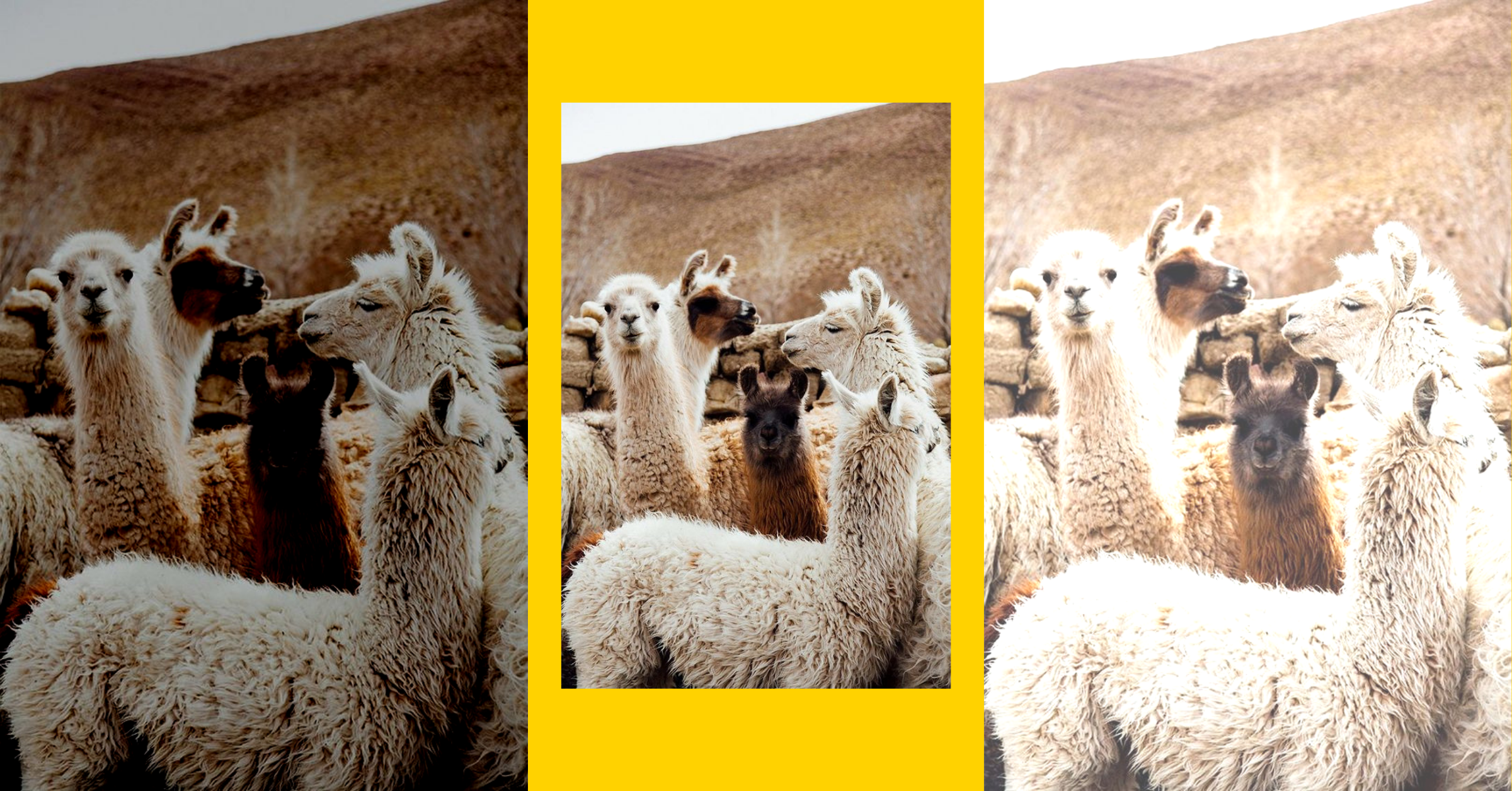
Knowing these details there is another question appeared - how to turn this material into a digital world?
Hocus-pocus: How to turn analog film movie into a digital one
The process of remastering is an extremely complicated process. That’s why every new movie released in digital 4K is a big deal. It takes around 6 to 12 months to remaster an old movie.
Remember, what an extreme sensation was Matrix 4K release?
Let’s try to sort it all out.
Restoration process refers not just simply to a movie encoding into a digital file for DVD. It includes the recovery process: peeling away the layers that have prevented you from seeing what’s been on the negatives all these years without adding any fake information.
To do the proper remastering job companies always try to find an earlier-generation negative which haven’t been destroyed with either fading or frequent rubbing in a projector.
These negatives may be cleaner, well-contrasted and have more sharp images per frame. Of course, they need to be preprocessed too: to have dust and scratch removal as well.
The process of restoration today is equally balancing on human resources and automated AI processing. The automation processes may misunderstand some details that look similar to to them (having the same color or structure) and accidentally do even worse. Humans prevent these things happen by controlling what software does.
The final result highly depends on the efforts studio makes and how elaborately the job was done.

Film is made up of 1000 of individual pictures called frames. They are shown in a rapid succession making the illusion of movement. The golden standard is 24 frames per second (fps as you may know).
The first thing in the remastering chain is - scanning.
To scan 90-minute into 4K movie the scanner works all day long for at least a week. Scanning into 2K requires twice less time. But 2019 and 2K not really a good combo...
Why so long?
Because the scanning process goes converting a movie into computer files frame by frame. After that, they are collected back together into a movie flow. When the whole movie was scanned, here we go to the next step - digital cleaning.
Earlier without proper software people did it mechanically literally using Q-tips.
That was very dangerous since you are touching the treasured original nitrate negative. And with one wrong move removing the dirt you could remove the part of the film besides.
With digital cleaning you don’t even need to touch the film. With a special software team of professionals does a cleaning frame by frame.
The main idea is to clean but not create artifacts or to put something extra that wasn’t there.
What should be removed?
- Weaves
They may appeared when the film was moving around - Flickers
It’s the light that can be caught in between the printing process of the negative to the positive - Dirtiness
- Scratches
Humans have wrinkles, film has scratches. That's called aging.
After that, it’s high time to move to color restoration.
Process of remastering should take into account the cinematographers and directors work from that time period. It should consider the location as well - where it was shot? In a studio or outside?
There is no doubt monochromatic movies require much less colorization job to be done on them. The main point in their editing - making them more contrasted and structured. As well as adding some bright black colors since these movies lost its natural contrasts by cause of the running several times through a projector.
Another side of the deal with colored movies.
The colors tend to rapidly fade on the film during its cinema screenings. Long-throw and large screen sizes require higher power Xenon 1-7kW lamps.
And all this light pressure was exposed every time per each frame. Quite challenging for a film to stay colorful, right?
Due to this process, the colors were getting paler and paler after several runs. Especially warm reds/pinks/oranges tend to vanish extremely fast, leaving a somewhat dulled greeny-blue print compared to a virgin one.
The remastered movies supposed to reveal to the world bright reds, purples, oranges with deep blues and greens, adding the whole new depth to the movie.
That works well either for black-and-white movies or for colored ones made after 50-ies. But there is a specific type of movies that requires insanely difficult restoration process. We are talking about the first technicolor movies.

So what’s the problem with technicolor restoration, chief?
Technicolor originally was born in the two-colored system - green and red. Blue came into the mix in 1932 when the Technicolor company added the key third strip.
Adding one more color let the cinema art to get the full possible spectrum of colors opposing to the limited two-colored paradigm in the previous version.
A specific and tough challenge to remaster Technicolor movies which were made in 1922 till 1955 (when already was created single-strap with three layers) is caused by the process of recording the movie. It was possible thanks to the innovative camera running three different strips of the film simultaneously.
These strips were regular monochromatic (black and white) running behind the color filters, sending the light into three different sources: RED light to one strip of film, GREEN light to another strip, and BLUE light to the final strip.
This camera used three times more film than nowadays. That means that the whole process was extremely expensive and complicated.
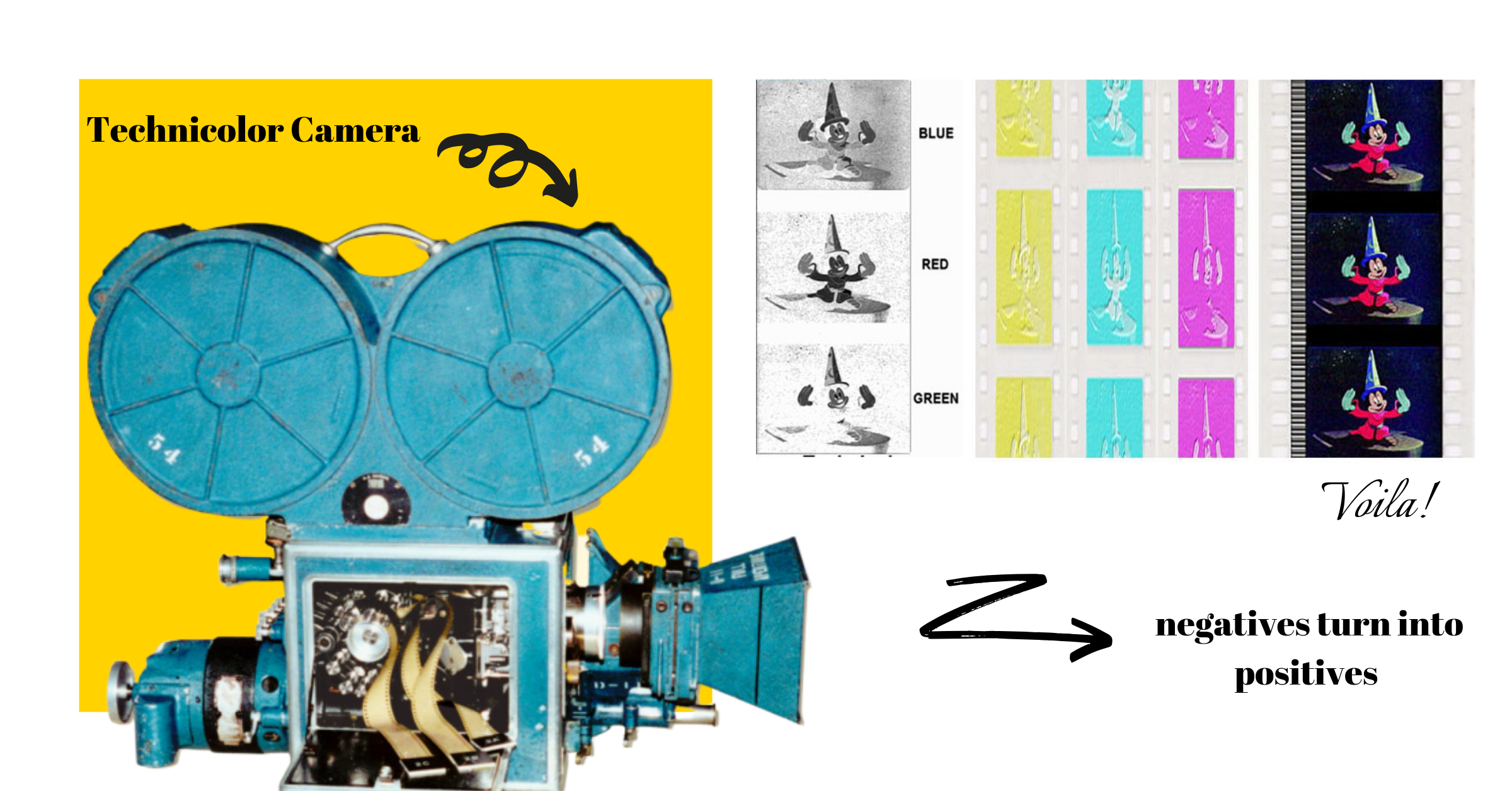
It ended up having the three copies of the same image in three different color variations. After several photo process in turning negative prints into positive.
Every positive matrix needs to be soaked in the dye interdependently to the color of light recorded by the negative printed on it: cyan for red, magenta for green, and yellow for blue.
The most interesting thing is that getting the final single colorful strip was an entirely mechanical process, not photographic. These three various-colored were physically pressed into a one single strip making the whole range of spectrum possible.
Afterward, the final print was imbedded in the gelatin for the final positive print. So no photosensitive chemical, only hardcore pressing film together with very tight tolerances. So cyan, yellow and magenta combined together made the vivid and ultra-saturated Technicolor we have today.
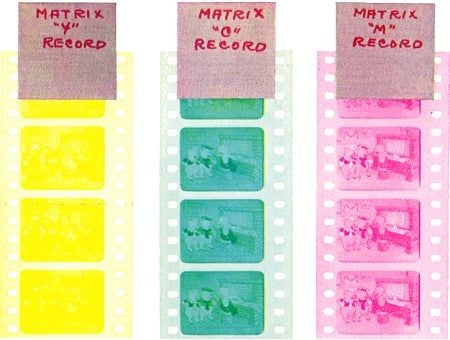
That all went well till Eastman Kodak introduced the film that recorded the three primary colors in three emulsion layers on a single strip in the mid-1930s in the United States.
But while the newly invented system was getting improved humanity went on with an old 3-strip system presenting to the world such masterpieces as Flowers and Trees (1932), Snow White and the Seven Dwarfs (1937), The Wizard of Oz.
The last Technicolor feature film was produced in 1955 and the epoch of 3-striped gone forever.
But how to remaster this type of movies?
We will take as an example “The Wizard from OZ” restoration.
Firstly there is a photochemical restoration need to be done. It takes around from 8 months up to 1,5 year inspecting existing elements frame by frame.
"The Wizard of OZ" was scanned 4K at 16-bit linear digital color space.
16-bit linear system means that 65536 colors are available per each pixel.
4K contains 4000 pixels wide per frame
That’s why every scanned frame was about 50 MB.
“The Wizard of OZ” was scanning as a black-and-white record. Each colorful film strip required to be scanned separately (one from the cyan, one from yellow and one from magenta), so technically there were 6 scannings to make the movie possible.
Afterward, there is a process of digital cleaning. The main difference with the average digital film cleaning that you need to do it 3 times in a row! That makes the process lasts for so long.
What’s more, if you skip any spot or scratch at one strip - it will appear on the whole movie.
After the cleaning process, the software married these three films together.
The main problem in this case is the different degree of shrinkage of 3 color-separated films, leading to inaccuracies in combining films into one. However, modern technologies overcome this difficulty by scaling and combining the image frame by frame to make the perfect alignment. It must be done elaborately right to the pixel.
The process of turning into digital is gaining momentum.
And that’s quite obvious: people are full of day-fly actions with repetitive scenarios. They want to rewatch golden era movies they were growing up with: BladeRunner, Matrix, Star Wars.
And that’s really cool the modern world can give us this opportunity to enjoy our favorite films on the biggest screens and feel comfortable. 2K, 4K or even 8K - everything is possible.
Moreover, the rewatching helps to notice what’s under the hood.
Try. Maybe you skipped some details that film director put inside because you were simply unable to see due to the small either TV resolution or cinema screen.
What is even more awesome that process of remastering keeps the art of shooting on celluloid film away from extinction. And allowing us to enjoy the highest possible quality in digital.
God save the film.
And technologies.

